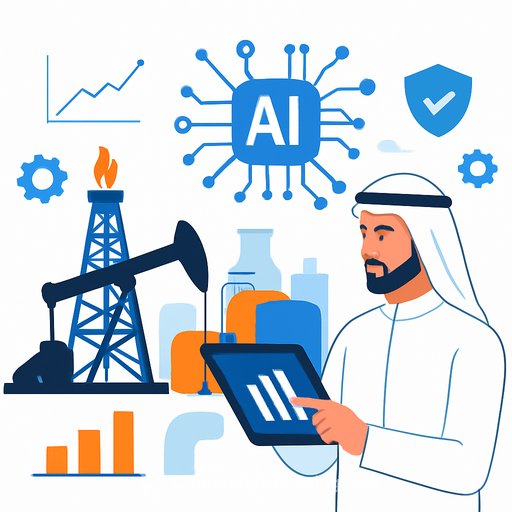Agentic AI will reset how work gets done - whether enterprises like it or not
We're past the debate. AI is already changing work. The only question left is speed.
Consider this: in KPMG's 2025 CEO Outlook, nearly three-quarters of 1,300+ global CEOs plan to allocate around 20% of their total budget to AI over the next year - and they're focused on hiring and upskilling, not mass layoffs. That's a clear signal: the "superhuman" employee - a pro amplified by AI - is moving from idea to implementation. See the CEO Outlook.
Why agents change the question
Traditional automation follows instructions. AI agents pursue outcomes. Give them a goal and context, and they pull in the right tools, data, and processes to get it done - with a human in the loop where it matters.
That shift lets teams ask better questions: What's the best way to get this result? What's blocking us? Suddenly, work isn't bound by old handoffs, narrow expertise, or yesterday's playbooks.
From silos to "superhuman" teams
Picture a procurement analyst working with agents that understand finance, vendor risk, contract terms, and graph relationships across systems. They don't just "do procurement" anymore. They can diagnose spend patterns, flag third-party issues, and optimize vendor portfolios in one flow.
Short-term, expect disruption. Long-term, expect new roles, faster cycles, and better decisions. This is an operating model shift, not a tool upgrade.
Three roles, one shift
- Agent Bosses: Build, govern, and maintain agents. Own outcomes, performance, and compliance.
- Agent Evaluators: Test agent behavior, validate quality, audit decisions, and tune prompts, data, and tools.
- Superhumans: Operators who orchestrate multiple agents to deliver work across functions.
Org charts built on rigid functions won't hold. Teams may look like three people and a dozen AI collaborators. You'll need new decision rights, incident paths (who do you call when an agent fails?), and shared metrics across business, data, risk, and IT.
Practical questions to answer now
- How do you onboard an agent? Identity, access, scope, and permissions.
- Who approves agent actions above a threshold? Define guardrails and escalation paths.
- How do you measure one person orchestrating ten agents? Update capacity and value models.
- Who owns upkeep? Assign budgets and SLAs for retraining, tools, and data quality.
Build the foundation: context, memory, and flow
The blocker isn't the model; it's context. Most company know-how lives in people's heads. If you don't capture it, your agents will guess.
Start building enterprise memory systems - think "context cartridges" and "knowledge capsules" that store decisions, playbooks, edge cases, and judgment. Agents draw from this living memory so they act like your best people on their best day, not a generic chatbot on a blank page.
The Agent Control System
You need a single hub to register, govern, operate, and upgrade agents - like HR systems, but for AI teammates. It should issue identities, log actions, monitor quality, enforce policy, route incidents, and manage lifecycles.
Tie this to your risk framework and internal audit. For guidance on oversight, the NIST AI Risk Management Framework is a useful reference point. Review NIST AI RMF.
Interfaces are changing fast
Over the next 12-18 months, expect natural interaction across voice, text, visuals, and gesture. Ambient systems will anticipate needs and tee up next actions. The UI becomes the work itself - less clicking, more directing.
What HR and managers can do in the next 90 days
- Map work to outcomes: List top 20 workflows by cost or delay. Mark steps that are repetitive, rules-based, or research-heavy.
- Define roles: Name your first Agent Bosses and Evaluators. Write clear charters and decision rights.
- Pilot with intent: Stand up 2-3 agents in one function (e.g., FP&A variance analysis, vendor due diligence, policy Q&A).
- Capture context: Turn tribal knowledge into living playbooks and decision trees. Store them where agents can use them.
- Stand up governance: Access control, human approval points, action logging, incident response, and red-teaming.
- Upskill fast: Train managers and ICs on prompting, agent orchestration, and evaluation. Tie learning to incentives.
- Set metrics: Baseline today's cycle time, quality, exceptions, and cost so you can prove ROI.
If you need structured paths for role-based learning, see practical AI upskilling by job function: Courses by job or explore recognized pathways: Popular certifications.
Metrics that matter
- Speed: Cycle time per task and time-to-decision.
- Quality: Error rate, rework, and exception rates vs. baseline.
- Adoption: Agent utilization by team and satisfaction scores.
- Risk: Policy violations, data leaks prevented, and audit findings.
- Cost-to-serve: Unit economics per workflow (human-only vs. human+agent).
- Reliability: Agent uptime, task success rate, and escalation frequency.
Accountability and trust
- Give every agent an owner. Tie outcomes to the Agent Boss's scorecard.
- Log every action. Make decisions replayable and auditable.
- Segment data. Limit what an agent can see and do based on role and risk.
- Set human approval thresholds for high-impact actions (spend, access, legal).
- Test continuously. Red-team agents against prompts, data drift, and tool failures.
Bottom line
Agentic AI isn't waiting for your org chart to catch up. Teams that build context, stand up an Agent Control System, and formalize roles will outpace those that stall.
The winners won't just adopt AI - they'll refactor how work flows, how people grow, and how decisions get made. Start small, measure hard, and scale what works.
Your membership also unlocks:










